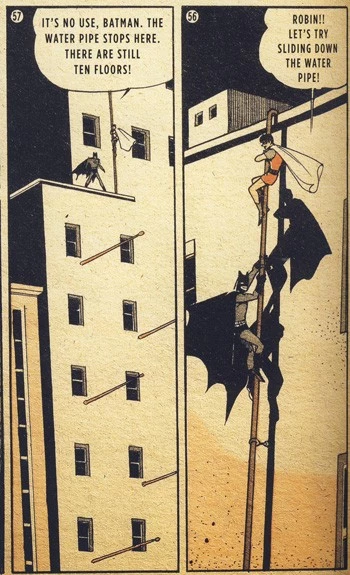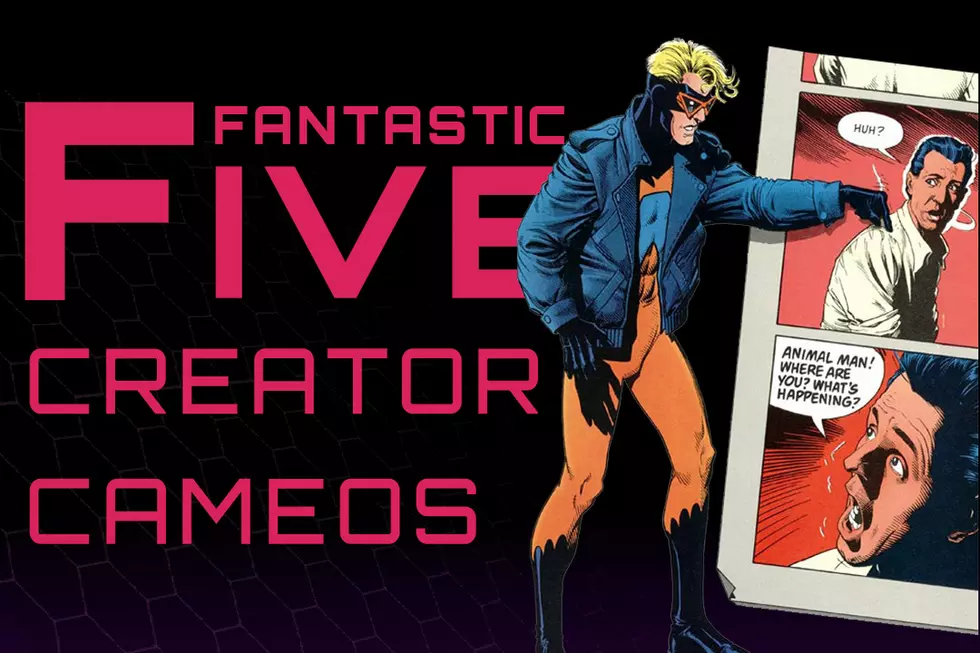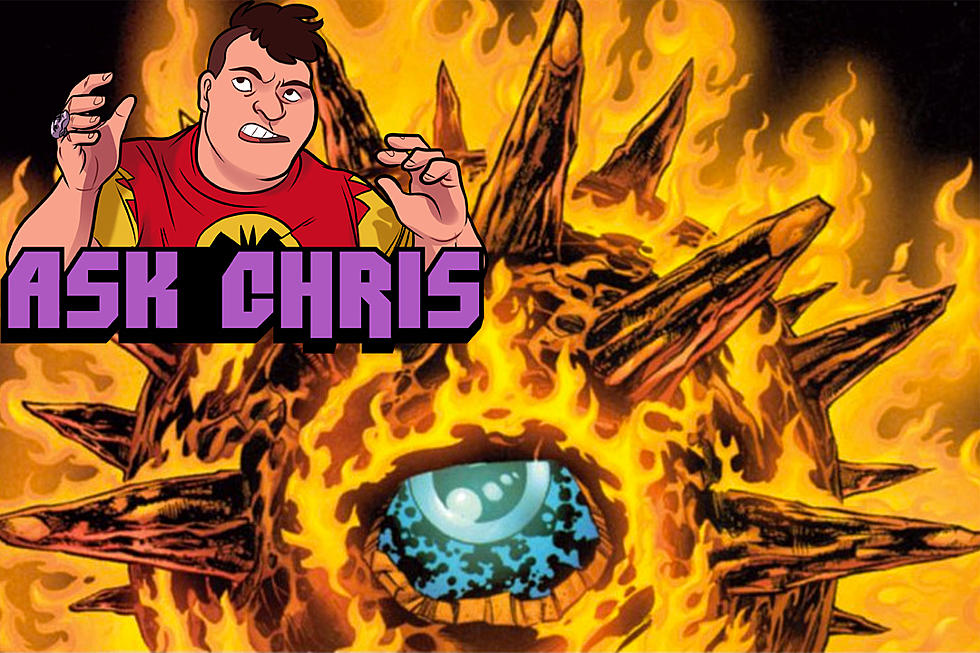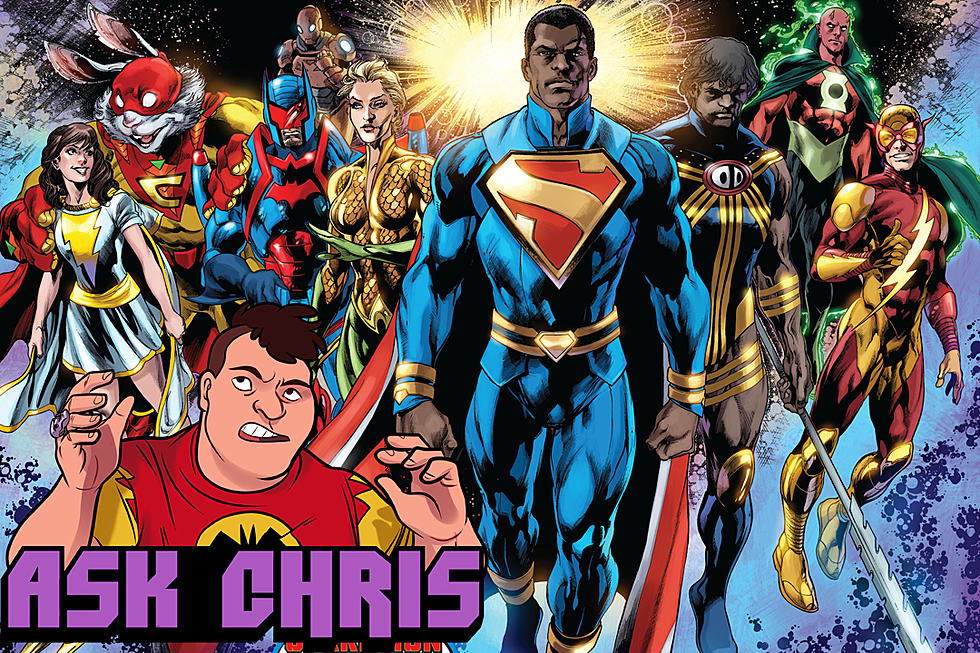
Lord Death Man of ‘Bat-Manga’ Gets Resurrected for ‘Batman, Inc.’

Last week, DC revealed the solicitation text for Grant Morrison and Yanick Paquettle's "Batman, Inc." #2, and like a lot of what Morrison's done during his run on Batman, this one's bringing back something from an obscure story from the '60s:
The dynamic new era of Batman continues! The Dark Knight and Mr. Unknown – the Batman of Japan – go up against Lord Death Man. It's going to be a fight to the end that could see the failure of Batman, Inc. before it's even begun!
While neither I nor ComicsAlliance's resident "Batman" annotator David Uzumeri have heard of Mr. Unknown -- which I think makes it safe to assume that he's new, although David Brothers points out a possible connection to the 2008 film "K-20" -- the other character in the solicitation is someone I'm very familiar with: Lord Death Man, who terrorized the Dark Knight in a story that ran in Japan's "Shonen Ace" magazine in 1966 (more recently republished in "Bat-Manga").
And he is awesome.

By setting his new story in Japan, Morrison is clearly drawing from the four-part 1960s Japanese Batman manga adaptation written and drawn by Jiro Kuwata, which was reprinted in 2008's "Bat-Manga," a book that drew no small amount of criticism for leaving Kuwata's off the cover despite his comics comprising the majority of its contest. Despite a pretty standard plot -- Batman can't figure out how a villain appears to die and be resurrected until he learns about a yoga technique designed to simulate death -- Kuwata's dynamic art and fantastic storytelling make it the clear standout of the book, which is no mean feat considering that it's up against a story where Kuwata pitted Batman against Professor Gorilla.
But what many "Bat-Manga" readers may not have realized is that Kuwata was actually adapting a story that had run a few months earlier in the pages of the American "Batman" comic:

With a few small changes -- including the addition of "Lord" to the villain's name, which simultaneously makes him sound way better and gives him that perfect not-quite-right trans-literal ring -- "Lord Death Man" is the exact same story as Robert Kanigher and Sheldon Moldoff's "Death Knocks Three Times." Cover dated for May of 1966, the American version ran at least a month before "Shonen Ace" started running "Batman" stories, and reading them side-by-side makes for a pretty interesting study, both in how they approached the same scenes as well as what Kuwata changed.
The most obvious difference is one of length: Kanigher and Moldoff were limited to 24 pages, while Kuwata's version ran for 59. Both stories are told with the same compressed style of storytelling, but the extra pages in "Shonen Ace" meant that Kuwata could expand the action into far longer sequences than his American counterparts.
The first chase scene, for instance, where Batman and Robin have to race (Lord) Death Man's elevator to the bottom of a skyscraper by descending along the outside, is set up in the exact same way. Here's Kanigher and Moldoff's"

And Kuwata's, virtually identical layouts, other than being flipped to read right-to-left:

The next page, though, shows the difference. In the original, Batman gets to the ground in four slim panels that take up half a page...

...which, despite the neat touches like the sound effects of the gunfire below them getting louder as they descend , seem more than a little mundane when you compare them to Kuwata's expanded take on the same scene:

The tight shots and the motion of Kuwata's panels as Batman and Robin swing from one flagpole to the next really sells it as a death-defying feat far better than Moldoff's simple dotted line -- it's a big action set piece rather than just a way of getting from one place to the next -- but there's a pretty practical reason for it as well. With "Shonen Ace's" weekly schedule, Kuwata's 59 pages were being produced in around the same time as Moldoff's 24, and spreading things out makes them go a little faster, even when you're drawing a double-page spread of the Batmobile doing donuts in a graveyard while Batman hangs onto a rope, kicking dudes in the face.
Which is why it amazes me that Kuwata actually added scenes to the story. Kanigher and Moldoff end their first scene with a scuffle that looks like it could've been adapted straight from the TV show, while Kuwata's Batman chases down Lord Death Man's car and Batarangs it 'til it wrecks:

The same thing happens during the nightmare sequences later in the issue, when Batman is taunted by Death Man's spectral floating head in his sleep:

This is my favorite sequence of the issue: Batman literally having night terrors because he can't figure out how a bad guy was pulling off his scheme -- which, incidentally, provides the perfect reason for Morrison to show him starting to rely on "problem solving microsleeps."
Kuwata's version starts the same way...

...but again, things go way bigger, spiraling into a dream sequence where Batman straight up decapitates Lord Death Man with a batarang:

Even the end of the story plays out differently. Kanigher and Moldoff have Death Man struck by lightning as he gloats, while Kuwata has him escape in an helicopter, only to be blinded by the Batmobile's smoke screen and crash into a set of power lines, blowing up his chopper's compliment of bombs.
Which is exactly what I think makes Lord Death Man so much more memorable than his American counterpart, and why it makes so much sense for Morrison to just go ahead and reclassify the Japanese version as the genuine article. The fact is, "Death Knocks Three Times" just isn't that great. It lacks the signature craziness and panache that Kanigher would bring to projects like "Metal Men" or even his war stories, and considering that he was ghosting for Bob Kane (who was actually the guy who got paid for the issue, according to Julie Schwartz's editorial notes), it's easy to imagine that Moldoff wasn't putting his all into it either. The story itself reads like one of the scripts that Kanigher infamously wrote on his lunch hour: Unfailingly standard, with the kind of plot that even Silver Age readers had seen before, especially when you compare it to the next issue, which introduced Poison Ivy. It's just sort of there, meeting the page requirements and not much else.
Kuwata, however, takes that standard story and makes every single element bigger, giving it a sense of grandeur that's perfectly encapsulated in the character becoming Lord Death Man. He was given a blueprint with every necessary element and built something that went far beyond what it drew from, and the appeal of that kind of storytelling to a writer like Morrison is pretty obvious.
Plus, he made Batman say stuff like this:

And there's a pretty good chance that's the best thing ever.
More From ComicsAlliance









